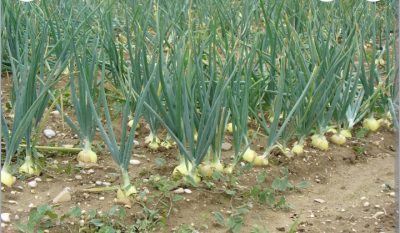
Biennial crops are a fascinating and unique category of plants that offer significant benefits for farmers and gardeners. Unlike annuals, which complete their life cycle in one growing season, or perennials, which live for several years, biennials take two growing seasons to complete their journey. This extended timeline allows for specific advantages in agricultural planning and gardening design. In this hall, we’ll look into what makes biennial crops special, study the examples, highlight their characteristics, and discuss how to grow and use them effectively.
Table of Contents
- What is biennial crops.
- Characteristics of Biennial Crops.
- Examples of biennial crops.
- Advantages of biennial crops.
Meaning of Biennial Crops
Meaning: Biennial crops are plants that complete their life cycle over two growing seasons. In the first season, they focus on vegetative growth, such as leaves, stems, and roots. In the second season, they produce flowers, seeds, and then die.
Characteristics of Biennial Crops
Two-Year Life Cycle: Biennials require two growing seasons to complete their life cycle.
- First Year: Focus on vegetative growth, such as leaves, stems, and roots.
- Second Year: Focus on reproductive growth, producing flowers, seeds, and then dying.
Vernalization Requirement: Many biennials require a period of cold temperatures between growing seasons (vernalization) to trigger flowering and seed production in the second year.
Storage of Energy: In the first year, biennials store energy in their roots or bulbs to fuel flowering and seed production in the second year.
Cold Tolerance: Biennials are hardy and can often survive cold winters, making them ideal for temperate climates.
Dual Harvest Potential: In the first year, they can be harvested for edible parts like roots or leaves. If left to grow, they produce seeds in the second year.
Examples of Biennial Crops
- Carrots
- Onions
- Beets
- Parsley
- Celery
- Cabbage
- Chicory
- Fennel
- Swiss chard
- Brussels sprouts
- Turnips
Let’s look at the common examples of biennial crops in details
Vegetables
- Carrots: Grown primarily for their edible roots in the first season. If left in the ground, they flower and seed in the second year.
- Onions: Harvested as bulbs in the first year; flowering occurs in the second year for seed production.
- Beets: Typically harvested in the first year but can be left to produce seeds in the second.
Herbs
- Parsley: A culinary favorite, parsley grows lush leaves in the first year and flowers in the second.
- Celery: Similar to parsley, it produces stalks in year one and flowers in year two if not harvested early.
Other Crops
- Cabbage: Known for forming heads in the first year, cabbage will flower and seed in the second year.
- Chicory: Often grown for leaves or roots in the first year, with flowering in the second.
Advantages of Biennial Crops
Biennial crops may take extra time, but they offer several benefits:
1. Seed Production: Biennials like carrots and onions are essential for seed farming. Allowing them to complete their life cycle ensures a steady seed supply.
2. Extended Harvest Window: In the first season, these crops are harvested for their roots, leaves, or stems. Left in the ground, they can provide additional resources like seeds in the second year.
3. Cold Tolerance: Many biennials survive cold winters, using the chill to trigger flowering (a process called vernalization). This makes them suitable for regions with varying climates.
4. Soil Health: Deep-rooted biennials like carrots and beets improve soil aeration and nutrient cycling, benefiting future crops in the same area.
How to Grow Biennial Crops Successfully
Growing biennials requires careful planning and attention to their unique life cycle:
- Choose the Right Varieties: Select biennial crops that thrive in your climate and soil conditions.
- Prepare the Soil: Biennial crops like carrots and beets prefer loose, well-draining soil to encourage root development.
- Plant Timing: Sow seeds in early spring or late summer to ensure optimal growth during the first year.
- Overwintering: If you want your biennials to flower and produce seeds, ensure they survive winter by mulching or providing frost protection.
- Pest and Disease Management: Monitor for common issues like aphids or root rot, especially in crops like onions and beets.
- Harvest at the Right Time: For edible parts like roots, harvest during the first year. If you’re after seeds, leave the plants to flower in year two.
Common Challenges with Biennial Crops
Premature Flowering (Bolting): Some biennial crops may flower too early due to stress from heat, drought, or overcrowding. Prevent this by maintaining consistent growing conditions.
Overwintering Failures: Harsh winters can kill biennial crops that aren’t adequately protected. Choose hardy varieties or use insulating methods like straw or cloches.
Patience Required: Biennials demand time and planning, which can be a drawback for gardeners who want quicker results.
Biennial Crops in Sustainable Agriculture
Biennial crops play a crucial role in sustainable farming systems. Their ability to store energy and produce seeds over two years makes them a reliable option for crop rotation and biodiversity. Additionally, many biennials, like beets and carrots, improve soil quality, which benefits subsequent plantings.
READ ALSO: Differences between annual, biennial and perennial plants
Conclusion
Biennial crops might require a bit more patience than annuals, but their unique life cycle offers plenty of rewards for those willing to wait. From delicious roots and leaves in the first year to valuable seeds in the second, these plants are a vital part of agriculture and home gardening. If you’re looking to diversify your garden or grow your own seeds, biennial crops are an excellent choice. Start with easy options like carrots or parsley and enjoy the benefits of these versatile plants.
See Also
Quick Revision Questions for Students
- What are biennial crops?
- Outline 5 characteristics of biennial crops.
- Give 4 examples of biennial crops.
- State the challenges of biennial crops.
- Outline 4 advantages of biennial crops
